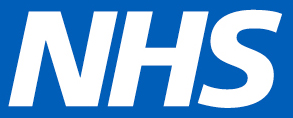How involving the right people in reimaging how data is used is moving parts of the system to truly integrated ways of working.
What was the problem you were trying to solve?
We needed to use data to understand how to improve the patient flow, enabling discharge from acute settings.
It's important to say that we’re a small but complex system, we have six local authorities (if including Buckinghamshire) so if we were going to do anything meaningful, we needed buy-in from providers across all areas.
Epic FHFT EPR (electronic patient record) had been implemented in June 2022, but it wasn’t giving us what we needed and the narrative and framing on Epic wasn’t conducive to integrated partnership working.
What Epic had initially provided did not have the granularity of information to enable decision-making in escalation meetings as it didn’t give enough information about the patient being discussed and depending on where you got data from it would be different.
We needed a data set that provided subjectively integrated information, a data set that was a repository for all partners to input information into and get information out of knowing that it was accurate and up to date.
The unprecedented pressures post-COVID-19 and from challenging winters were the catalysts for us needing to develop a purposeful dataset/dashboard that could be used to help move people out of hospital and into suitable supportive community settings. But at the same time as knowing we needed to have data that could help with discharge pathways, we also knew we needed to overcome the legacy of negative narratives and blame cultures that existed in the discharge management context.
We wanted to stop the narrative of DTOC(delayed transfer of care), DTOC gave the impression that partners were stopping people from being discharged from hospital rather than them not having capacity to take any new patients or residents into their service. There was an element of mistrust linked to this historic narrative and a blame culture, without overcoming these we would never be able to work as a truly fully integrated health and care system.
What did you do?
Storytelling was an important principle for this work, we made it our mission to listen to lots of different perspectives so that we could understand each other’s contexts, challenges, hopes and needs.
We brought together stakeholders who all had a vested interest in this topic to coalesce around our purpose of getting to a place where we had a meaningful and accurate data set that served a range of needs and perspectives.
We then formed a small but representative working group that worked through some of the detail, they then reported their progress back to the Urgent and Emergency Care Board and the wider stakeholder group for visibility and feedback. That group included an amazing data analyst and a brilliant representative from the voluntary sector providers. It was also particularly helpful that Epic was on site for a year after implementation for snagging purposes, so the conditions were there for us to move forward.
What has this work cost?
It’s hard to quantify the cost of this but what was needed was the executive permission to take the time to do this well. Significant parts of people’s existing roles needed to be focused on this work, and those involved needed the energy and space to be able to work through it.
What are the benefits you have seen from this work?
We have truly formed a coalition of the willing by taking the time to listen to different perspectives and to coalesce with people on the purpose of the final dataset and dashboard, this is moving us towards being a truly integrated system of partners that are united in their purpose and have a shared narrative around discharge pathways and patient flow.
What were the critical factors in getting to where you are in this journey?
Early in the work, we created a data charter, which was a set of principles that we would hold ourselves to in the design and decision-making processes, this really helped us when we were making decisions as a team. A key principle was around shared ownership – this piece of work didn’t belong to the trust or a provider, it was owned by the collective and anchored in the purpose.
Getting the right people on board at the right time and using purpose to overcome blocks was key. For example, information governance (IG) became a sticking point when we were trying to get sign-off from the trust for the final data set; IG colleagues were concerned that patient data would be available to providers that patients hadn’t consented to having access.
As we’d held the lenses of the different dashboard users in mind when designing the data set, including how it would be presented to those users, this enabled us to gain IG sign-off as we’d ensured that patient-identifiable data was only visible to those who required it and that it was within the Data Protection Act requirements etc.
Inquiry was an important principle for us. We had to check the data quality and then check it again (and again) before rolling anything out, even though we had a lot of eager people wanting to roll it out quickly due to the need.
As a core project team, we needed to be confident that we were delivering on our single version of the truth intent and not just repeating history. We managed these tensions by having senior colleagues leading the work, we had leverage within the system to manage that context.
We didn’t over-engineer a project plan, we let the work dictate the delivery dates and so on. We kept an eye on the need for training and communication to ensure buy-in at launch, however, we didn’t give a definitive rollout date until we were confident that we had a realistic date. By keeping people up to date with progress and challenges it allowed us to have space to do the work that was needed, this also created helpful feedback loops where we could really understand – and be open to – the perspectives of everyone who would have a relationship with the dataset and dashboard.
What is the next chapter in this story?
At the moment people want to see the data and the dashboard, for us it’s key that we are sharing the story around it as well.
The dashboard could easily be deployed in other health and social care systems, however without paying attention to the human factors it wouldn’t have an impact.
If this dataset was agreed behind a closed door – without true collaboration and coproduction – then it wouldn’t be adopted as the culture wouldn’t be in place. In the NHS we have a real issue around adoption and implementation, we know that working in a relational way with partners was pivotal in this work.
In relation to the dashboard, we will keep reviewing its use and keep developing the data set to make it as meaningful as possible. We would love to be able to change some of the language within Epic so it aligns to our shared narrative, but that’s a big challenge as we don’t own the product – so we just need to make sure that we don’t adopt their narrative within our system and go back to the ‘delays in transfer of care’ days.
What are the leadership top tips you’d like to share with others, based on your learning from this work?
Be patient. It sounds easy to build a coalition of the willing and to coalesce around a common purpose – it’s not. It takes time. If we’d rushed this the product would not be as good and more importantly the conditions for implementation would not have been created.
Focus on relationships. the significant learning from this work is to do change in a way where we are paying attention to relationships as well as paying attention to the task in hand. This led to the shared narrative which is really important for any change to succeed and for people to feel a connection or sense of ownership in the work.
Have the right people involved at the right time. Those involved need to understand the context and have the delegated authority to make decisions as needed, they need to have the leverage within the system and the right skills or experience to make things happen.
All-level buy-in is key and get it as early as possible. From executives to those delivering services in the hospital and community. Feedback and communication loops are fundamental, keep people up to date about the story.
Overestimate how long everything takes. Everything takes longer than you’d expect. Even just getting data out of different places took much longer than we expected, let alone then bringing it all together and representing it in the dashboard. Also check everything, multiple times – it takes time but it’s worth it.
Keep purpose at the heart of everything. It’s about the project and the purpose, not people or providers, if there are challenges it isn’t helpful to attribute blame – this won’t enable you to overcome the challenge. Blockers to change become levers for change when you reframe things.
Shine a light on what’s working as well as highlight areas for development. We wanted the data to be able to spotlight what is going well, often in really challenging circumstances, as well as identify where we can make improvements.
The process brings integrity to the outcome. The NHS spends lots of time and money on learning and innovation but struggles with implementation and adoption. People are asking to see the dashboard because they are assured that it’s of good quality, the reason it’s good is because of who created it and how it was done.
Want to know more?
Then please



